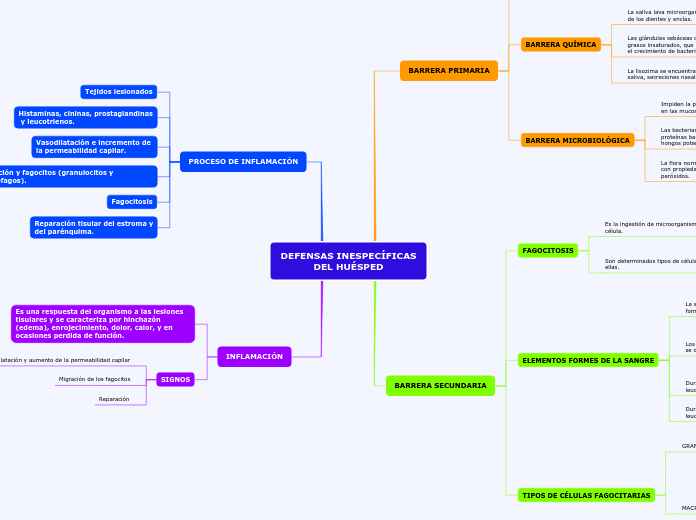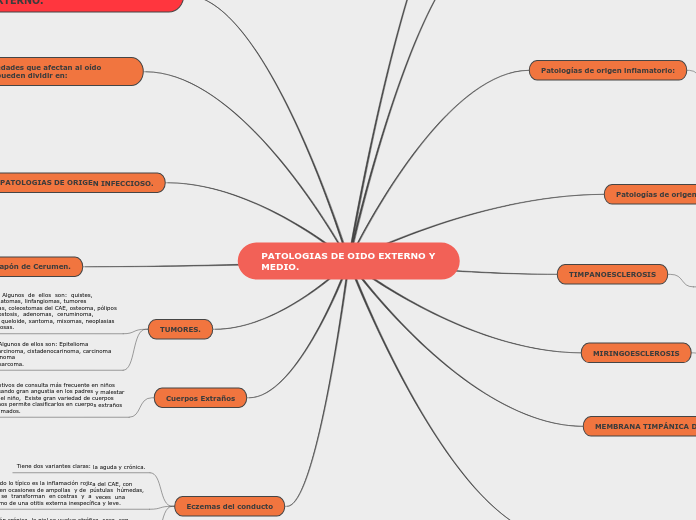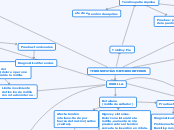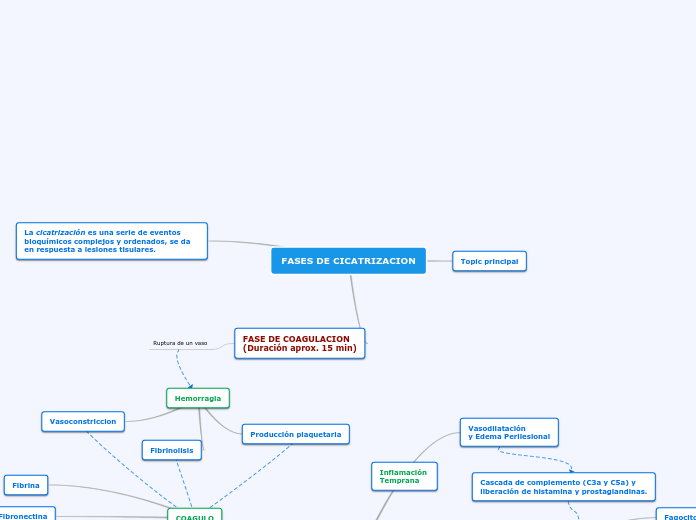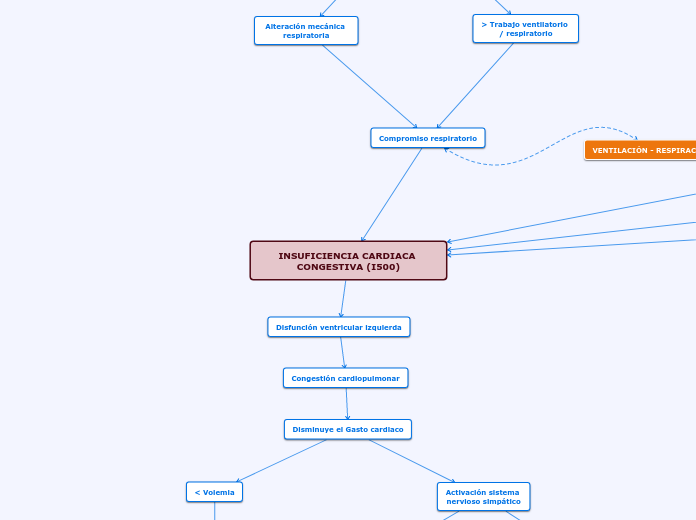DEFENSAS INESPECÍFICAS
DEL HUÉSPED
In linguistics, syntax is the set of rules, principles, and processes that govern the structure of sentences in a given language, usually including word order.
INFLAMACIÓN
A compound sentence is a sentence that has at least two independent clauses joined by a comma, semicolon or conjunction. An independent clause is a clause that has a subject and verb and forms a complete thought.
SIGNOS
Create your own compound sentences, using the coordinators above.
Reparación
Migración de los fagocitos
Vasodilatación y aumento de la permeabilidad capilar
Es una respuesta del organismo a las lesiones tisulares y se caracteriza por hinchazón (edema), enrojecimiento, dolor, calor, y en ocasiones perdida de función.
When independent clauses are joined with coordinators (also called coordinating conjunctions), commas and semicolons, they do more than just join the clauses. They add meaning and flow to your writing.
PROCESO DE INFLAMACIÓN
A complex sentence is a sentence that contains an independent clause and one or more dependent clauses.
An independent clause can stand alone as a sentence, but a dependent clause even though it has a subject and a verb cannot stand alone.
Reparación tisular del estroma y
del parénquima.
Attributive clauses serve as an attribute to a noun (pronoun) in the main clause. This noun or pronoun is called the antecedent of the clause.
Fagocitosis
An adverbial clause is a group of two or more words that function as an adverb in a sentence.
Migración y fagocitos (granulocitos y macrófagos).
An appositive clause follows another noun or noun phrase in apposition to it; that is, it provides information that further identifies or defines it.
Vasodilatación e incremento de
la permeabilidad capilar.
The subject clause is a dependent clause that acts as a subject.
Histaminas, cininas, prostaglandinas
y leucotrienos.
A predicative clause may be introduced by conjunctions - that, whether, whether... or, as, as if, as though, because, lest, the way - or connectives.
The latter may be conjunctive pronouns - who, whoever, what, whatever, which - or conjunctive adverbs - where, wherever, when, whenever, how, why.
Tejidos lesionados
The object clause is a phrase on which a verb performs an action. It falls at the end of a sentence, and is governed by a verb or a preposition.
BARRERA SECUNDARIA
TIPOS DE CÉLULAS FAGOCITARIAS
See the example below and try to create your own simple sentences.
Tim is the driver.
MACRÓFAGOS
Predominan cuando la infección decrece.
Los macrófagos forman parte del sistema fagocitario mononuclear.
Aumentan de tamaño y se convierten en macrófagos fijos.
Proceden de células precursoras de la médula ósea que se dividen dando monocitos circulantes.
GRANULOCITOS
Los neutrófilos son los fagocitos
más importantes.
ELEMENTOS FORMES DE LA SANGRE
See the example below and try to create your own simple sentences.
Tim drives the car.
Durante muchas infecciones el número de
leucocitos aumenta (leucocitosis)
Durante muchas infecciones el número de
leucocitos aumenta (leucocitosis)
Los leucocitos (glóbulos blancos)
se dividen en dos categorías:
Agranulocitos (linfocitos y monocitos)
Granulocitos
(neutrófilos, basófilos y eosinófilos)
La sangre está formada por plasma (fluido) y los elementos formes (células y fragmentos de células).
FAGOCITOSIS
See the example below and try to create your own simple sentences.
Tim drives.
Son determinados tipos de células sanguíneas o derivan de ellas.
Tipos de células fagocitarias
Elementos formes de la sangre
Es la ingestión de microorganismos y materia ingerida por una
célula.
BARRERA PRIMARIA
BARRERA MICROBIOLÓGICA
Traditional grammar defines the object in a sentence as the entity that is acted upon by the subject.
La flora normal también produce gran variedad de metabolitos con propiedades antibacterianas como (lactato, propionato) y peróxidos.
Las bacterias de la flora normal producen bacteriocinas,
proteínas bactericidas o bacteriostáticas frente a bacterias y hongos potencialmente patógenos.
The indirect object identifies the person/thing for whom/which the action of the verb is performed.
The indirect object is usually a person or a thing.
Impiden la presencia de microbios
en las mucosas.
The direct object is the receiver of the action mentioned in the sentence.
BARRERA QUÍMICA
The predicate of a sentence is the part that modifies the subject in some way. Because the subject is the person, place, or thing that a sentence is about, the predicate must contain a verb explaining what the subject does and can also include a modifier.
La lisozima se encuentra en lágrima,
saliva, secreciones nasales y sudor.
Las glándulas sebáceas contiene ácidos
grasos insaturados, que inhiben
el crecimiento de bacterias patógenas.
La saliva lava microorganismos
de los dientes y encías.
BARRERA FÍSICA
The subject of a sentence is the person, place, thing, or idea that is doing or being something. You can find the subject of a sentence if you can find the verb.
Ask the question, 'Who or what 'verbs' or 'verbed'?' and the answer to that question is the subject.
Mucosa
Piel
